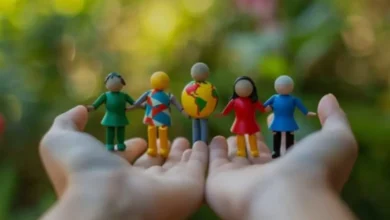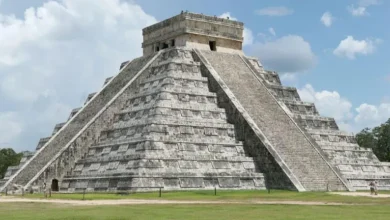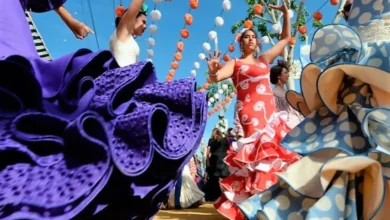Music is a universal language, but its role and significance vary greatly across different cultures. This article delves into the profound importance of music in Native American and African societies, exploring how it’s interwoven with their traditions, spirituality, and everyday life. We’ll look at how music functions as more than just entertainment, serving as a powerful tool for communication, healing, and cultural preservation.
Music as a Lifeblood: The Native American Perspective

For Native American cultures, music isn’t simply an art form; it’s a vital part of their very being. It’s used to tell stories, teach lessons, celebrate milestones, and connect with the spiritual realm. Music is deeply integrated into almost every aspect of traditional life, from the simplest daily activities to the most sacred ceremonies.
The Connection to Nature
Many Native American musical traditions are intrinsically linked to the natural world. Instruments often use materials found in nature such as wood, hides, and gourds, creating sounds that echo the environment. Rhythms can mirror the cycles of nature, and melodies may evoke landscapes or animal sounds. This connection emphasizes the respect and harmony with nature, which is central to many tribal beliefs.
The Power of Vocals and Chants
Vocal music plays a crucial role, often featuring chants, songs, and melodies that are passed down through generations. These are not just tunes, but repositories of oral history, conveying myths, legends, and the tribe’s collective memory. Chanting, in particular, is a significant element, often used in ceremonies to induce trance-like states, connect with ancestors, and facilitate healing.
See also Work-Life Balance: A Tale of Two Cultures – Scandinavia vs. America
Work-Life Balance: A Tale of Two Cultures – Scandinavia vs. AmericaDiverse Musical Instruments
While vocal traditions are prominent, instruments play a vital supporting role. Commonly used instruments include:
- Drums: The heartbeat of many ceremonies, used to create rhythms that guide dances and rituals. The drum is seen as a sacred instrument connecting the physical and spiritual worlds.
- Flutes: Often made from wood or bone, flutes produce melodic sounds, and they are associated with courtship, spiritual contemplation, and storytelling. The Native American flute holds a unique place in the musical landscape.
- Rattles: Made from gourds, shells, or other materials, rattles add percussive sounds and are frequently used in healing ceremonies. They help to create a complex sonic environment.
- Whistles: Used in particular ceremonies, whistles add sharp, piercing tones to the soundscape.
Ceremonial Significance
Music in Native American cultures is rarely separated from its ceremonial context. From puberty rites to marriage ceremonies and burial rituals, music accompanies and enhances these events. It’s not merely an accompaniment; it’s an integral part of the ceremony itself, believed to possess a power that influences both the human and spirit world. For example, the “powwow,” a modern-day gathering, often features traditional music and dance that honors cultural heritage and fosters community.
Preserving Cultural Identity
In the face of colonization and cultural disruption, music has been crucial for preserving Native American identity. It serves as a link to the past, allowing communities to maintain their traditions, language, and spiritual beliefs. By passing down songs and chants, they ensure that their cultural heritage continues to thrive. The preservation of these cultural traditions is vital for future generations.
Rhythmic Pulse: Music in African Cultures

Similarly, music is absolutely fundamental in African societies, permeating every aspect of life. From birth to death, music accompanies and defines human experience. It is not just entertainment, but also a method of communication, social commentary, and spiritual practice. The diversity of African music is as vast as the continent itself, with each region and ethnic group possessing its unique traditions and styles.
See also African Culture’s Growing Impact on Music Fashion and Art Worldwide
African Culture’s Growing Impact on Music Fashion and Art WorldwideThe Social Role of Music
In many African cultures, music functions as an essential form of social expression. It’s used to celebrate births, mark the transition into adulthood, honor marriages, and remember the dead. It’s a powerful means of communication, conveying messages and narratives within the community. Music is a communal activity, often involving call-and-response patterns and rhythmic interactions, fostering a sense of unity and participation.
Rhythm and Percussion
Rhythm is at the heart of most African music. Complex rhythmic patterns, often layered and interwoven, create a vibrant and dynamic soundscape. Percussion instruments, such as drums, shakers, and xylophones, are central to these traditions. Drums hold particular significance, as they are often seen as possessing a spiritual power and are used in ceremonies, celebrations, and for sending messages.
Diverse Instrumentation
African music is characterised by a variety of fascinating instruments, including:
- Drums: An array of drums exists from large ceremonial drums to hand-held varieties. Each type has its distinct purpose and sound.
- Mbira (thumb piano): Originating in Zimbabwe, this unique instrument produces melodic tones by plucking metal tines. It is often used for personal enjoyment or in spiritual ceremonies.
- Kora (harp-lute): Commonly found in West Africa, the kora is a long-necked stringed instrument with a beautiful, resonant sound, often used by griots to tell stories.
- Talking Drums: These hourglass-shaped drums can mimic the tonal qualities of speech and are often used to communicate messages across distances.
- Balafon: A type of wooden xylophone, the balafon produces a percussive and melodic sound, commonly used in ensembles.
Storytelling and Oral Tradition
Music in African cultures is a primary tool for preserving history and oral tradition. Griots, who are traditional historians and storytellers, use music, song, and spoken word to pass down the history, genealogy, and cultural values of their communities. Through storytelling, communities maintain their identity, and stories of the past are brought to life.
Music and Spirituality
Like Native American cultures, many African societies integrate music deeply into their spiritual and religious practices. Music is seen as a way to connect with ancestors, invoke deities, and heal the sick. Specific rhythms, chants, and songs are often associated with particular rituals or ceremonies. The connection between music and the spiritual world is undeniable.
The Evolution of African Music
African music has been shaped by numerous historical and cultural influences. The transatlantic slave trade had a devastating impact, but also led to the diffusion of African rhythms and styles around the world. This influence is palpable in genres like blues, jazz, and hip-hop. These genres are not just copies of ancestral styles but also creative adaptations and expansions of them.
Music as Resistance and Empowerment
Music has also played a pivotal role in struggles against oppression, both historically and in modern times. During the apartheid era in South Africa, for example, music was a powerful tool for resistance and protest. It gave a voice to the voiceless and empowered individuals to advocate for justice and equality. Music’s ability to rally people remains profound.
Common Threads: Parallels Between Native American and African Music

Despite their geographical distance and unique histories, Native American and African music share a number of common characteristics that highlight the universality of music’s profound importance:
- Oral Tradition: Both cultures rely heavily on oral tradition to pass down their musical heritage. Songs, chants, and stories are learned through listening and participation, ensuring continuity across generations.
- Function Over Form: Music serves more than just aesthetic or entertainment purposes. It’s a tool for spiritual connection, healing, social cohesion, and cultural preservation.
- Community Focus: Music is not typically performed by individuals for individual enjoyment. Instead, music is a communal activity, involving the entire community in the creation and experience.
- Deep Spiritual Connection: Music is seen as a bridge between the physical and spiritual realms. It is often employed to connect with ancestors, deities, and the natural world.
- Rhythm as a Foundation: Rhythm forms the core of both musical traditions. Complex and engaging rhythmic patterns define the distinct soundscapes of both Native American and African music.
The Modern Landscape: Preservation and Evolution
In the contemporary world, both Native American and African musical traditions continue to evolve and adapt while simultaneously trying to preserve their heritage. Many artists are drawing inspiration from their traditional roots while blending in modern techniques. This results in both maintaining their heritage and ensuring the music continues to live and grow. There is a continued effort in these communities to educate young people about their musical traditions.
In both communities, various educational programs, cultural festivals, and music workshops are aimed at safeguarding traditional music and encouraging creative expression. This dual approach of preservation and innovation ensures these rich and diverse musical traditions will continue to flourish for generations to come. The world continues to learn from the rich and powerful traditions of these two communities.
The role of music in Native American and African cultures transcends mere entertainment. It is a vital force that shapes identity, preserves history, connects communities, and facilitates spiritual expression. By understanding the profound significance of music in these cultures, we gain a deeper appreciation for the diverse ways in which humanity connects with itself and the world around it. The deep connection between music and life in these cultures remains a source of inspiration and valuable cultural lessons.“`




